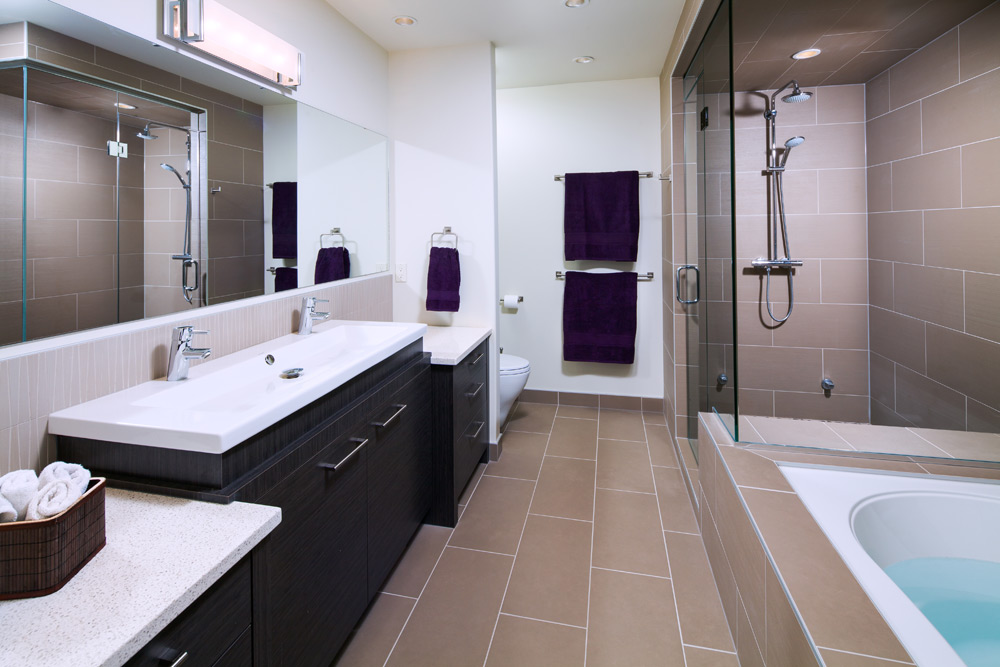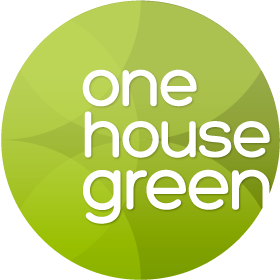Over the last several years that green building has slowly emerged as not just a building trend but ultimately the way all buildings will be constructed in the near future. Forward thinking designers and builders have been envisioning how exactly we can “re invent the wheel” after all, the house as we know it does work pretty well. That system (the house as we know it” doesn’t start to become enviable until we begin to ask it to do things it was not intended to do, namely be more energy efficient.
It is when we ask conventional construction to be more energy efficient that we start to see the little issues that become really big problems in the short and long run.
You would think (and many have) that making a building more efficient would be easy enough, simply add more insulation right. Well yes, but that has a diminishing return on investment if your building leaks like a sieve. All the insulation in the work won’t help if the conditioned air (the air we want to keep in the building) be it cooled or warmed, simply escapes out around windows and door, through electrical boxes, etc.
So what did we do? We made a super air tight building in addition to a super insulated one. Problem solved right? Well no, know is when all the issue begin. Now we are living in a bubble, now we have trapped all the chemicals in our living space and all the moisture in our wall cavities. Those chemicals that have been used to make everything in our homes, chemicals that no one thought would ever spend as much time next to the human body or next to each other are starting to have severe reactions with the houses occupants and with each other. In addition, poor building science has trapped moisture inside our wall cavities and allowed the growth of all manner of nasty moulds and bacteria to further contaminate the living environment of this house.
So what to do? Well we need to look at the house as a system, in totality, and not at the individual components as plug and play items. That is to say that a change to one component in the system does and will affect the other components in the system. So either we do nothing, which i don’t think any globally conscious person would do. Or, we can examine each component of the system, for it’s viability, as well as it’s ability to work into the new system, the green system that we are developing.
So first things first, the new wall. Several of these wall systems new, some are variations in the old, all are improvements in the conventional. All have benefits and downfalls, i don’t think that there is a perfect wall system out there yet, but i do think that doing nothing and accepting the notion that it can’t be made better is definitely not the solution.
Green builders use various advanced wall construction systems that improve the performance of the home and conserve natural resources. These systems are the result of ongoing research that involves materials manufacturers, the home building industry and government. Here are some of the new systems being used today by green builders. This is by no means the entire list but rather a good place to start. As i become more familiar with these and others i will continue to update the site.
Advanced Wood Framing Systems
Conventional houses are built with vertical wall studs spaced about 16 inches apart. The size of the studs is determined by the load characteristics of the house and by the need for specific wall thickness to accommodate insulation. Because lumber comes in only a few standard sizes, many exterior walls are overbuilt, wasting wood.
Advanced framing uses wood studding that precisely matches the design needs of the house, by adjusting the distance between studs. As a result, and as the industry moves to metric measures, wall studs may be spaced 50, 55 and 60 cm apart (20, 22 and 24 inches, respectively). This saves wood and reduces the amount of thermal bridging caused by the studs, which are less resistant to the movement of heat than the insulated wall area.while this approach may sound a lot like the way things are being done now (because it is) the next step in this system might be to use 2×6 studs on a 2×8 top and bottom plate in a staggered stud configuration. This would greatly if not completely eliminate the potential for thermal bridging across the wood studs.the benefits of this system would be that we are not really changing a whole lot from the conventional in that we are still using the same materials and trades as before, which keeps the learning curve for trades and suppliers down which in turn keeps that costs increases down as well. The down side ti this approach is that it really doesn’t reduce our use of raw materials (wood) and dos not significantly increase the insulate value of the wall system. It also does not address any issue relating to ease of and quality of the air/ vapor barriers.
Insulated Concrete Form (ICF) Systems
This relatively new wall-construction system doesn’t usewood. Instead, the wall is constructed from insulatingfoam blocks that are filled with steel reinforcing and concrete. After the concrete is poured into the premoulded forms, interior and exterior finishes are applied, and the wall is complete. The benefits of this system include high levels of energy efficiency, greatly reduced if not eliminated moisture control concerns (this system acts as a moisture/ air barrier on its own), and greatly reduced sound attenuation. This system is also very efficient from a building waste stand point, as a modular based system, smaller “waste” pieces can be reused in other areas of the building. The downside of this system would be the slowed rate of construction, and weather delays. The increased use of concrete and metal (both of which have a high carbon footprint), and the added volume of eps (expanded polystyrene) foam insulation/ formwork. This is another example of how concerned should we be about the addition of more chemicals in and around our living spaces. Also this system does require some specialized knowledge (allbe it minimal).
Panelized and Modular Construction
Some green builders use factory manufacturing techniques to build homes. These systems involve large sections of wall that are fabricated in a factory and assembled on-site. Finishing, pre-wiring and pre-plumbing are often done during the manufacturing process, so site construction is fast and efficient.
Modular construction goes a step further – the entire home is built in a factory, in sections that are shipped and assembled on-site. A home may consist of any number of modules, and virtually any house design can be built this way. Site assembly of a modular home takes only days. The benefits of either factory building process include increased capacity for quality assurance during construction and the protection of the unfinished house from rain or snow. This system also has a very low wastage component as all building materials are at one plant for construction and not shipped to individual building sites across the city.
The downside of this system is that although it may be advertised as any house can be built this way, it is hard to imagine more complex houses and building sites fitting into this mold easily. And while this can increase efficiency and quality it does not in anyway address the material choice and technique issues relating to conventional construction.
Airtight Drywall Approach (ADA)
In conventionally constructed homes, the movement of air and moisture through exterior walls is controlled by an air/vapour barrier (usually polyethylene sheeting) installed behind the drywall. Some builders use a different technique called ada (airtight drywall approach) which involves a rigid air barrier.
With ada, drywall, sub-flooring and other structural elements in the home are carefully sealed together to reduce air leakage. Wall and ceiling surfaces are then painted with vapor diffusion retardant sealers to prevent moisture from passing from the interior of the home into wall cavities. Ada construction is particularly effective in areas that experience high winds.
While the benefits of the this system are to be found it is my belief that this system places to much emphasis on the ability of the drywall contractor to do the work perfectly in order for the system to function properly. That should the system fail (at the blower door test, or later) it would be very difficult to identify and subsequently fix). And while this technique may be a small step in the right direction, it does not in anyway address the material choice issues relating to conventional construction.
Structural Insulated Panels (SIP)
Structural insulated panels (sip’s) are panels that have a core of rigid foam insulation between an exterior and interior skin. The most common materials used for the skins are structural oriented strand board (osb) or plywood. The foam cores consist of expanded polystyrene, extruded polystyrene or polyurethane. The two skins, in combination with the integral insulation core, carry all of the loads of the structure. The foam core keeps the two skins aligned, acting as a web, and provides the insulation value.
The benefits of structural insulated panels are that they are energy efficient, installation is fast, the walls are straight and smooth for the interior finishes and exterior cladding.
The down side of this system can be cost, depending on the insulation type in the selected panel system, curing times for the foam can be quite long. The panels can also be quite delicate prior to installation, great care needs to be taken with them and they need to be kept out of severe weather as well. Also some specialized knowledge is required for the installers, but I think most skilled frames could learn the system and its techniques in a few days of instruction.


